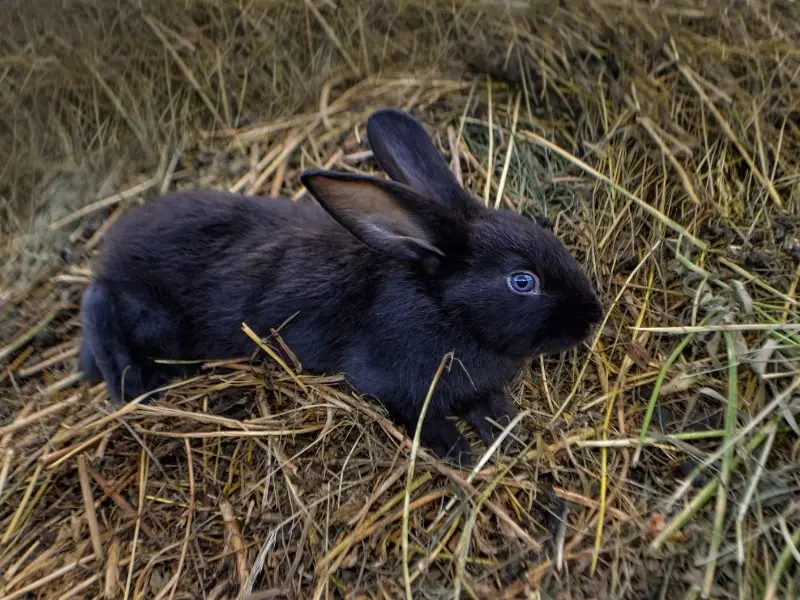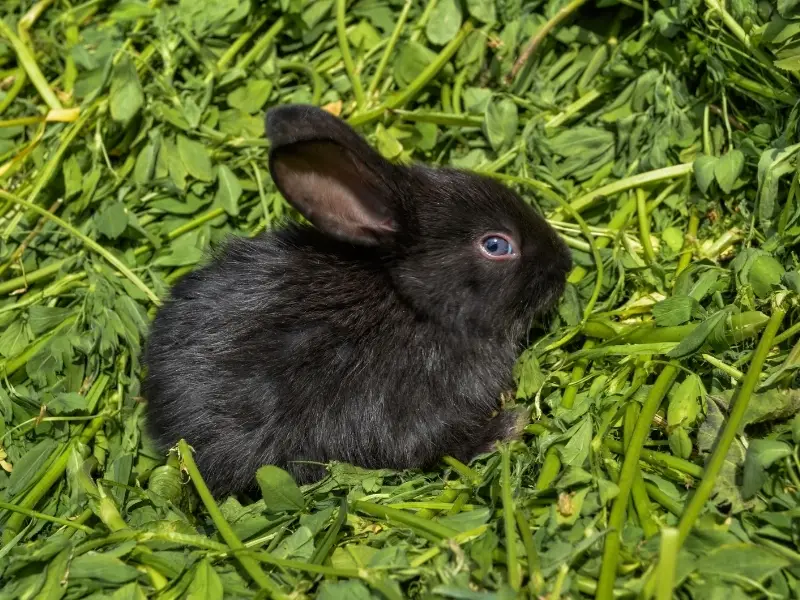Despite its name, the Polish rabbit is not from Poland. Small in size and extremely cute, Polish rabbits are most commonly bred by fanciers and are popular show rabbits.
But, are Polish rabbits good pets? Polish rabbits make fantastic pets for singles, seniors, couples, and families with older kids. They have a curious, affectionate, and docile nature and will happily be held by their owners. While they make great pets, Polish rabbits aren’t a good fit for younger kids since they can easily get hurt.
If you are looking for a small, gentle, and friendly pet rabbit, the Polish rabbit breed might be a great choice! Continue reading to find out more about these small rabbits.
What Is a Polish Rabbit?
The Polish rabbit is a popular breed of domestic rabbit that is most often bred by fanciers and exhibited in rabbit shows. This breed is best known for its small size and loving nature that makes them a popular choice for pet rabbits.
Polish Rabbit History and Origin
Regardless of what their name suggests, Polish rabbits most likely originated in England. Their exact origin and history are a bit murky and it is still not completely clear how these rabbits came to be.
There’s a mention of Polish rabbits in English literature in 1860 and some believe that they are offspring of an albino Dutch rabbit. By the 1900s Polish rabbits were one of the most popular breeds in Europe, particularly in Belgium.
By 1912 Polish rabbits found their way to America where they quickly became one of the most popular show rabbits. Soon after, the Polish rabbit was recognized by the American Rabbit Breeders Association (ARBA).
From 1925 American rabbit breeders started crossing Polish rabbits with other small rabbits to create various coat colors that we have today.
Polish Rabbit Characteristics

Due to its small size, the Polish rabbit is often confused with the Netherland Dwarf. However, Polish rabbits are slightly larger and their heads are not as rounded.
These bunnies have short heads with full cheeks, large eyes, and short ears that touch all the way from the base to the tip.
Though small in size, the Polish rabbit isn’t a dwarf breed as it has larger ears, a non-brachycephalic head, and a less cobby body than the Netherland dwarf (source).
Size, Weight, Shape
As mentioned previously, the Polish rabbit is small in size and has a compact body type. These smaller rabbits weigh from 2.5 to 3.5 lbs, with the ideal weight being 2.5 pounds.
Color Varieties
The American Rabbit Breeders Association recognizes the Polish rabbit in six different color variations. They are ruby-eyed white, blue-eyed white, black, blue, chocolate, and broken (any coat color mixed with white).
Up to the 1950s, most Polish rabbits in the United States had either red eyes or blue eyes. The ruby-eyed Polish rabbits are true albinos. The blue-eyed variety isn’t a true albino since it has a different white gene.
In 1957 the American Rabbit Breeders Association recognized the black and chocolate variety of the Polish rabbit. The blue variety was recognized in 1982, and the broken variety is the latest addition, recognized in 1998.
Coat
These cute bunnies have short and soft flyback fur that is fairly easy to maintain. To keep your rabbit’s coat clean and shiny, brush it once or twice a week. Regular grooming can help you remove loose hair and minimize shedding.
Like most other rabbit breeds, the Polish rabbit goes through the molting season and will start to shed more than usual during spring. At this time, you may want to groom your pet rabbit three times a week to keep the shedding under control.
Be careful when brushing your rabbit, as they can easily become injured due to their small size and fragile build. Also, choose an appropriate brush based on your bunny’s size and make sure that you aren’t pulling their coat while brushing them.
Lifespan
The Polish rabbit has an average lifespan of five to six years. However, it’s not uncommon for spayed and neutered Polish rabbits to live anywhere from eight to 10 years.
Temperament
Polish rabbits have a docile and affectionate nature which makes them fantastic pets to people of all ages and families with older children.
While most people believe that smaller rabbits make better pets to families with young children, that’s not really the case. You see, the smaller the rabbit, the easier it can become injured or hurt if mishandled or dropped by a young child.
Despite having an amazing personality, the Polish rabbit won’t be the perfect pet for small children. These gentle, curious, and loving bunnies are better suited to adults or families with kids old enough to understand how fragile and dainty rabbits are.
Polish rabbits like to interact and spend time with their families and don’t mind being picked up, held, or petted by their owners. If you decide to get one of these cute furballs be prepared to play and interact with your pet bunny every day.
While generally calm, Polish rabbits like to play and are extremely curious creatures. To prevent your rabbit from getting bored and frustrated make sure that they have suitable toys to chew and play with.
Besides being ideal apartment dwellers, smaller rabbits are also somewhat easier to train than large rabbit breeds. Besides litter training your Polish rabbit, you can also teach them their name, or train them to come when called or stay.
While possible, training a rabbit isn’t as easy as training a cat or a dog, so be prepared to invest time and trust the process. Arm yourself with patience and healthy bunny treats and start training your bunny as soon as you bring them home.
Polish Rabbit Care
Like any other rabbit breed, the Polish bunny has certain needs that have to be met, for them to lead a happy and healthy life. When it comes to caring for your Polish rabbit, here’s what you’ll need to do:
Housing
Polish rabbits can withstand low temperatures if they are kept dry and out of drafts. Having said that, your bunny will be better off living indoors, and we advise you to keep your Polish rabbit inside the house.
Due to its small size, your Polish rabbit won’t need a huge enclosure. But, the cage should be large enough to allow your bunny to stand, stretch, and live comfortably (source).
When choosing an indoor enclosure, look for cages made of durable wire and with a hard or plastic bottom. Steer clear from wire-bottomed cages since they are uncomfortable for rabbits to stand in and can damage their feet and cause sore hocks.
To make your Polish rabbit comfortable at home, use rabbit safe bedding, such as hay, wood pellets, or shredded paper to line its enclosure. The bedding needs to be spot cleaned every day and completely removed once a week to keep the enclosure clean.
Diet
A Polish rabbit’s diet is like any other rabbit’s diet as it should consist of at least 70% hay. The rest should include equal parts fruits, vegetables, and pellets.
When it comes to feeding your bunny, research what types of food are safe, as not all fruits and veggies are good for rabbits to eat. Feed your rabbit fruits only as treats, as it contains sugar which can lead to obesity if ingested on a regular basis.
Besides feeding a healthy and balanced diet to your pet bunny, make sure that they have unrestricted access to fresh and clean water.
Health
Polish rabbits aren’t affected by any hereditary health problems and are considered generally healthy. However, they can suffer from common rabbit diseases, just like any other rabbit.
Ear mites are a common problem seen in rabbits, especially those with large ears. Inspect your bunny’s ears regularly and look for signs of ear mites. If you notice that your bun is scratching its ears or shaking its head, and if the inside of the ear looks red and swollen, take your pet to the vet (source).
Overgrown teeth are another common issue and are commonly seen in rabbits that don’t eat enough hay. Check your rabbit’s mouth once a week and if any of their teeth look longer than they should, add more hay to their diet.
Chewing on hay will naturally file your rabbit’s teeth and keep them at an ideal length. But should your bun’s teeth become overgrown you’ll need to take them to the vet who’ll file the teeth to an appropriate length.
Polish Rabbit Price
Polish rabbits on average cost anywhere from $50 to $150. Pet quality Polish bunnies are generally at the lower end of the price range, while show quality rabbits usually cost significantly more.
Conclusion
The Polish rabbit is a popular show rabbit that is often seen dominating rabbit shows across the United States. However, these small and cute rabbits also make wonderful pets due to their affectionate, docile, and friendly natures.
Best suited for indoor living, Polish rabbits can be kept in a house or an apartment and make curious and loving companions to people of all ages. Having said that, these small and delicate bunnies can be easily injured during play, so they aren’t recommended for homes with small children.
Related Articles:

